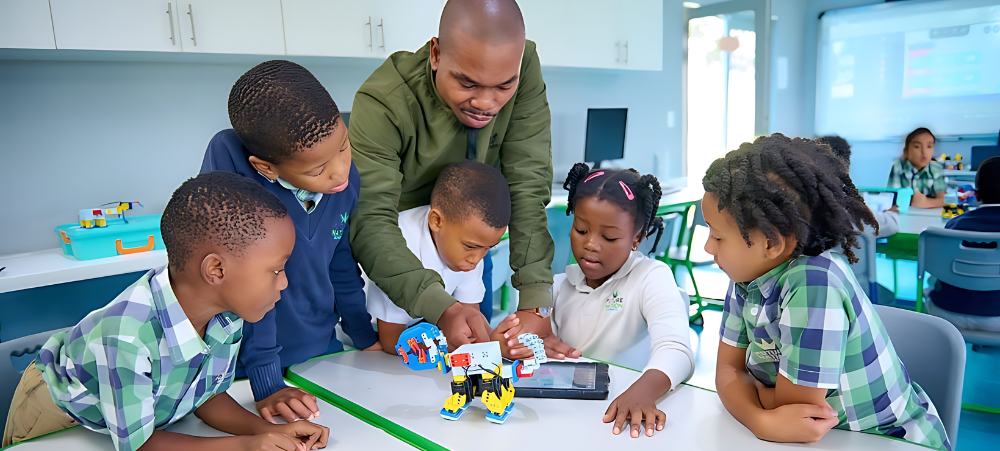
The Dreaded “Dys” … understanding Dyslexia and Dyscalculia
Dyslexia and dyscalculia are specific learning disabilities that affect a child’s ability to read and perform mathematical calculations, respectively. These conditions can have significant impacts on a child’s educational experience, leading to frustration, low self-esteem, and academic difficulties. However, with proper understanding, early diagnosis, and targeted interventions, children with dyslexia and dyscalculia can thrive in school and beyond. This article provides an in-depth look into these conditions, including definitions, warning signs, diagnostic procedures, and the support structures that can be implemented in educational settings. Defining Dyslexia and Dyscalculia Dyslexia is a neurological condition that primarily affects reading skills. It is characterised by difficulties with accurate and/or fluent word recognition and by poor spelling and decoding abilities. These challenges are often unexpected in relation to other cognitive abilities and the provision of effective classroom instruction. Dyslexia is not related to intelligence; rather, it is linked to the way the brain processes written language. Children with dyslexia may struggle with reading comprehension, slow reading speed, and difficulty with spelling, even though they might excel in other areas. Dyscalculia, on the other hand, is a learning difficulty that affects a child’s ability to understand numbers and learn math facts. Children with dyscalculia have trouble with tasks such as recognising numbers, understanding numerical concepts, remembering math facts, and performing calculations. Just as dyslexia is a difficulty with reading that is not due to lack of intelligence or effort, dyscalculia is a difficulty with math that is not due to laziness or lack of effort. The condition can manifest in various ways, from difficulty with basic arithmetic to struggles with more advanced math concepts as the child progresses through school. Warning Signs in School-Aged Children Recognising the warning signs of dyslexia and dyscalculia early on is crucial for timely intervention. The signs can vary depending on the age and developmental stage of the child. Warning Signs of Dyslexia: Preschool Years: Delayed speech development, difficulty learning new words, problems with rhyming, and trouble recognising letters and numbers. Early Elementary School: Slow learning of letter names and sounds, consistent trouble with reading and spelling simple words, guessing at words rather than sounding them out, and avoiding reading tasks. Later Elementary School: Difficulty with reading fluency, poor spelling, trouble with comprehension, difficulty remembering sequences (like the alphabet), and avoidance of reading and writing tasks. Warning Signs of Dyscalculia: Preschool Years: Difficulty learning to count, trouble recognising numbers, confusion with basic concepts like “more” and “less,” and challenges with simple puzzles. Early Elementary School: Difficulty understanding the concept of time, problems with recognising patterns, struggles with basic arithmetic operations (addition, subtraction), and trouble understanding math symbols. Later Elementary School: Difficulty with more complex math concepts such as multiplication and division, trouble understanding fractions, difficulty measuring things, and struggles with keeping track of scores in games. Diagnosing Dyslexia and Dyscalculia Diagnosis of dyslexia and dyscalculia requires a comprehensive evaluation, typically conducted by a team of professionals, including psychologists, special educators, and speech-language pathologists. Diagnostic Process for Dyslexia: Developmental History: Gathering information about the child’s early language development, reading habits, and family history of reading difficulties. Cognitive Testing: Evaluating general cognitive abilities to rule out intellectual struggles. This may include tests that assess memory, attention, and problem-solving skills. Reading Tests: These include assessments of phonemic awareness (the ability to recognise and manipulate sounds in words), decoding (reading unfamiliar words), reading fluency, and comprehension. Language Tests: Assessing the child’s spoken language abilities to rule out any underlying language disorders that could be contributing to reading difficulties. Diagnostic Process for Dyscalculia: Mathematical Testing: This includes assessments of basic math skills such as number recognition, counting, and arithmetic operations. More complex assessments may involve problem-solving, understanding of math concepts, and applying math in real-life situations. Cognitive Testing: Similar to dyslexia, cognitive tests are used to rule out other potential causes of the child’s difficulties with math. Tests may include evaluations of working memory, spatial reasoning, and attention. Observations and Interviews: Observing the child in a classroom setting and interviewing teachers and parents about the child’s performance in math-related tasks can provide valuable insights. Support Structures and Interventions Once dyslexia or dyscalculia is diagnosed, the focus shifts to providing appropriate support to help the child succeed in school. Effective intervention plans are typically tailored to the individual child’s needs and may involve a combination of strategies. Support Structures for Dyslexia: Specialized Reading Instruction: Children with dyslexia benefit from explicit, systematic instruction in phonics, which helps them understand the relationship between letters and sounds. Multi-sensory teaching methods, which engage more than one sense at a time (e.g., seeing, hearing, and touching), are often effective. Assistive Technology: Tools such as audiobooks, text-to-speech software, and word processors with spell-check can help children with dyslexia access written material and complete written assignments. Classroom Accommodations: These might include extra time on tests, allowing oral instead of written responses, and providing notes or outlines of lessons to reduce the burden of writing. Reading Support: Regular practice with a reading specialist, either in a small group or one-on-one, can help reinforce reading skills and build confidence. Support Structures for Dyscalculia: Explicit Math Instruction: Like reading interventions for dyslexia, math instruction for children with dyscalculia should be explicit and systematic. This may involve breaking down complex problems into smaller, manageable steps and using visual aids to reinforce concepts. Use of Manipulatives: Hands-on tools such as blocks, counters, or visual aids can help children better understand abstract math concepts by making them more concrete. Math Tutoring: Regular sessions with a math tutor who specialises in working with children with learning difficulties can provide targeted support and help the child develop strategies for tackling math problems. Technology Aids: There are various apps and software designed to help children with dyscalculia practice math skills in an engaging and supportive environment. Emotional and Social Support: Building Confidence: It is essential to focus on the child’s strengths and provide positive reinforcement. Encouraging the child to pursue interests and activities they enjoy can boost self-esteem. Peer Support: Creating



































